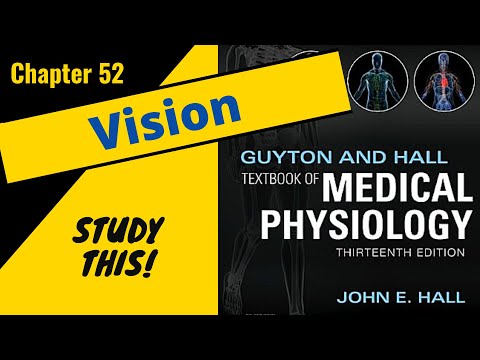Which is Better for You – Medical Assistant or EMT?
Contents
- What is a medical assistant?
- What is an EMT?
- What are the duties of a medical assistant?
- What are the duties of an EMT?
- What are the educational requirements for a medical assistant?
- What are the educational requirements for an EMT?
- What is the job outlook for a medical assistant?
- What is the job outlook for an EMT?
- What are the salary prospects for a medical assistant?
- What are the salary prospects for an EMT?
If you’re wondering whether a career as a medical assistant or an EMT is right for you, then this blog post is for you. We’ll go over the key differences between the two roles so that you can make an informed decision.
Checkout this video:
What is a medical assistant?
The medical assistant profession has grown in popularity in recent years as a way to begin a rewarding career in the medical field without spending years in school. Medical assistants perform a variety of administrative and clinical tasks to support the work of physicians and other health care professionals.
While there are many similarities between Medical Assistants and Emergency Medical Technicians (EMTs), there are also some important differences. Both professions require completing an accredited training program and passing a certification exam, but EMTs also must complete a state-approved licensing exam.
Medical assistants are more likely to work in outpatient settings, such as physician’s offices, clinics, and surgery centers, while EMTs are more likely to work in ambulance services or emergency departments. Medical assistants typically have more opportunities to specialize in a particular area of medicine, such as pediatrics or ophthalmology, while EMTs generally provide care for all types of medical emergencies.
Salary is another important consideration when choosing between these two professions. According to the U.S. Bureau of Labor Statistics, the median annual salary for medical assistants was $32,480 in 2015, while the median annual salary for EMTs was $32,670. Growth projections for these two occupations are similar, with both expected to add jobs at a rate of 24% from 2014-2024.
What is an EMT?
An EMT is an emergency medical technician. They are first responders to medical emergencies and are trained to provide basic life support. EMTs are often the first people on the scene of an accident or emergency and are responsible for stabilize the patient and transporting them to a hospital for further treatment.
Medical assistants, on the other hand, work in doctors’ offices, clinics, and other healthcare facilities. They perform administrative and clinical tasks to support the work of physicians and other healthcare professionals. Medical assistants typically have less training than EMTs but their duties can include taking medical histories, measuring vital signs, administering injections, and assisting with minor surgical procedures.
So, which is better for you – an EMT or a medical assistant? It depends on your goals and interests. If you want a career in healthcare but don’t want to go to college for 4 years, then becoming a medical assistant may be the better option for you. Medical assistants can find jobs in a variety of settings and can move up in their careers without getting a 4-year degree. However, if you’re interested in working in emergency situations and don’t mind going to school for 2 years, then becoming an EMT may be the better choice for you.
What are the duties of a medical assistant?
The duties of a medical assistant are wide-ranging and depend on the type of facility in which they work. In a small clinic, a medical assistant might be responsible for greeting patients, scheduling appointments, answering phones, taking patient medical histories, preparing patients for examination, and performing basic laboratory tests. In a larger facility, they might specialize in a particular area, such as billing or coding. Medical assistants might also be responsible for scheduling surgeries and other medical procedures.
What are the duties of an EMT?
An EMT is a medical professional who responds to emergency calls for medical assistance. He or she is responsible for providing care to patients at the scene of an accident or medical emergency, and for transporting them to a hospital or other medical facility for further treatment. EMTs are trained in basic life support and are often the first responders to an emergency call.
EMTs perform a variety of duties, including:
– Responding to emergency calls
– Assessing patients’ condition
– Providing basic life support, such as CPR
– Stabilizing patients
– Transporting patients to a medical facility
What are the educational requirements for a medical assistant?
The educational requirements for a medical assistant are not as stringent as those for an EMT. A medical assistant typically needs to have a high school diploma or equivalent, although some jobs may require postsecondary education, and must complete a brief period of on-the-job training. In contrast, an EMT must complete a formal training program that typically lasts about six months and includes both classroom instruction and hands-on experience.
What are the educational requirements for an EMT?
EMTs are trained to provide basic life support, which includes CPR, airway management and bleeding control. EMTs receive between 130 and 150 hours of classroom instruction and hands-on training. They must also complete a skills test and a state-recognized EMT certification exam.
Medical assistants, on the other hand, provide both clinical and administrative support to healthcare professionals. They typically have less direct patient contact than EMTs. To become a medical assistant, you will need to complete an accredited medical assistant program, which includes both classroom instruction and clinical experience.
What is the job outlook for a medical assistant?
The medical assistant job outlook is excellent. The Bureau of Labor Statistics (BLS) reports that medical assistants, including those who have completed certified medical assistant programs, can expect to see 29% employment growth between 2016 and 2026. This growth is much faster than the average for all occupations.
What is the job outlook for an EMT?
The job outlook for an EMT is very good. The demand for EMTs is expected to grow much faster than the average for all occupations between 2018 and 2028, according to the U.S. Bureau of Labor Statistics (BLS). An estimated 36,400 new jobs will open up during that time period.
What are the salary prospects for a medical assistant?
Medical assistants are in high demand across the healthcare industry. In fact, the Bureau of Labor Statistics projects that medical assistant jobs will grow by 23% from 2016 to 2026 – much faster than the average for all occupations.1
With this growing demand comes increased competition for medical assistant jobs. So, how can you set yourself apart from other job seekers? One way is by pursuing an Associate’s Degree in Medical Assisting (MA).
While not required, an MA can give you the skills and knowledge you need to succeed in this role. What’s more, it can also provide a bump in salary. The median annual wage for medical assistants was $33,610 in May 2017,2 but those with an MA often earn 20% more than those without one.3
Another way to make yourself more competitive is to become certified as a medical assistant. Certification is not required in all states, but it may be preferred or even required by some employers. Certification demonstrates your commitment to your career and shows that you have the skills and knowledge necessary to be a successful medical assistant.
What are the salary prospects for an EMT?
Emergency Medical Technician (EMT) Salary Prospects
The median wage for an Emergency Medical Technician (EMT) is $15.63 per hour, or $32,670 per year. The top 10 percent of EMTs make more than $22.24 per hour, or $46,290 per year. The bottom 10 percent of EMTs make less than $10.49 per hour, or $21,780 per year.*
Medical Assistant Salary Prospects
The median wage for a Medical Assistant is $14.73 per hour, or $30,610 per year. The top 10 percent of Medical Assistants make more than $20.60 per hour, or $42,830 per year. The bottom 10 percent of Medical Assistants make less than $9.89 per hour, or $20,560 per year.*
*Data from the Bureau of Labor Statistics






